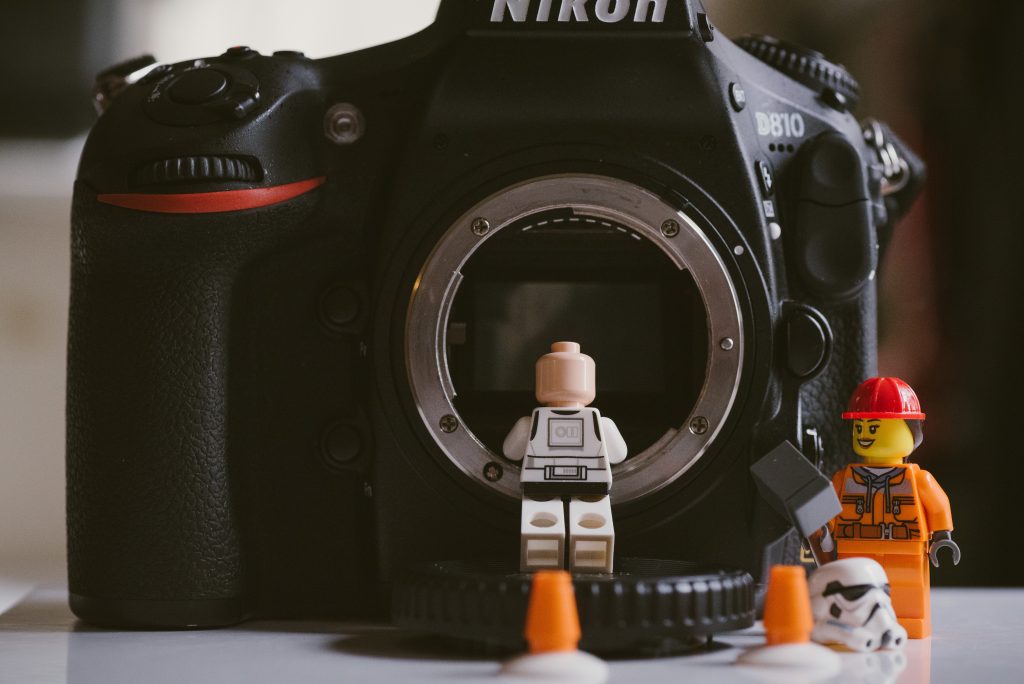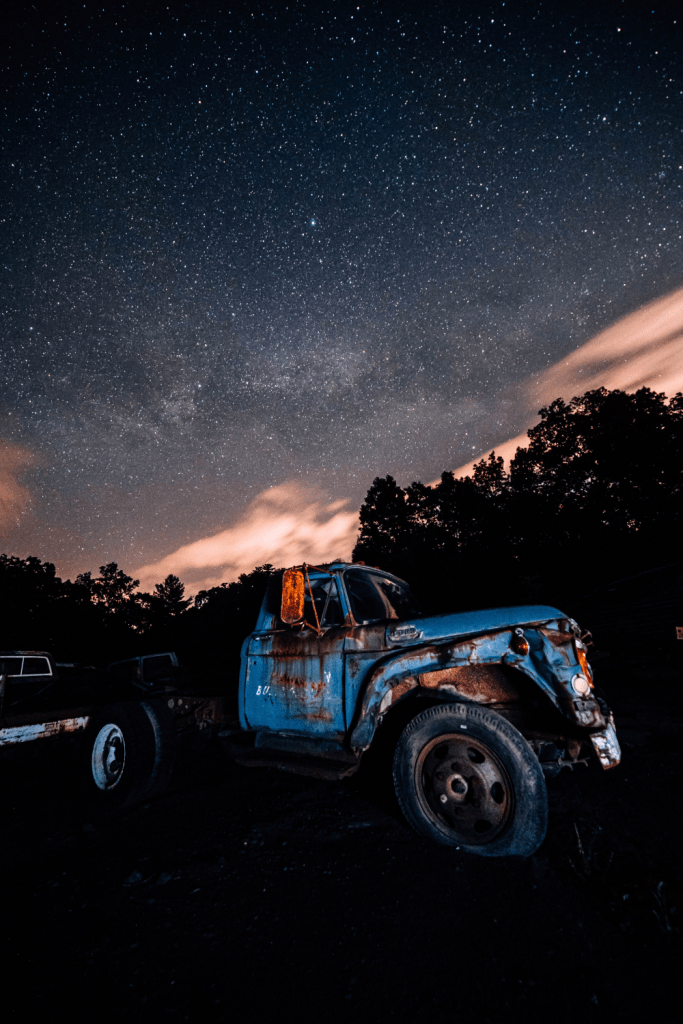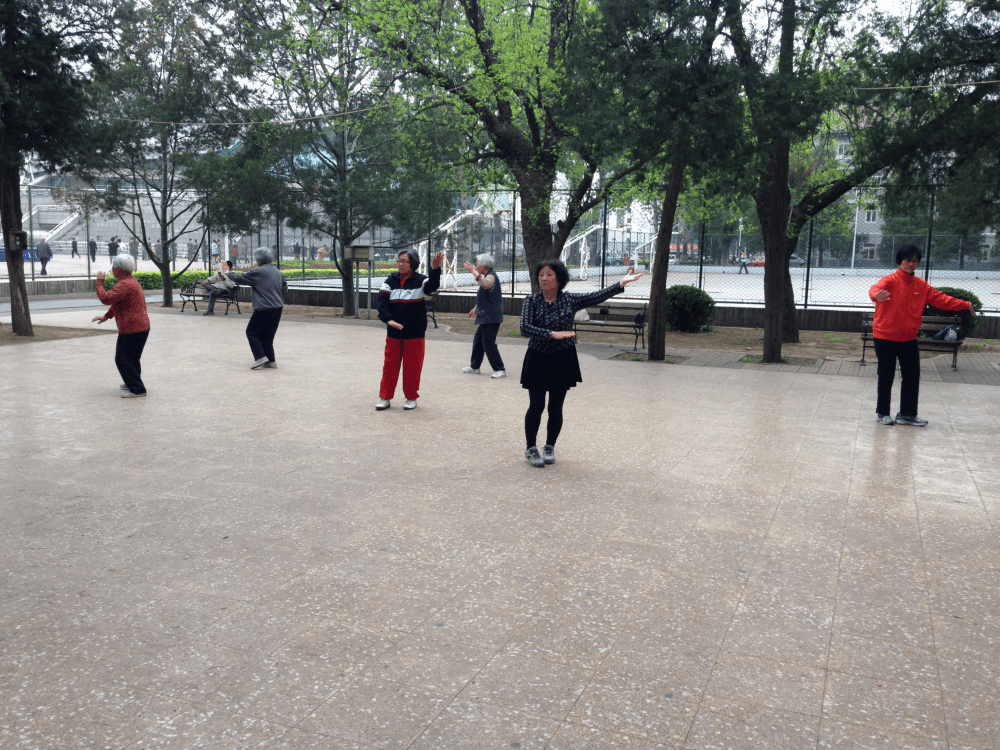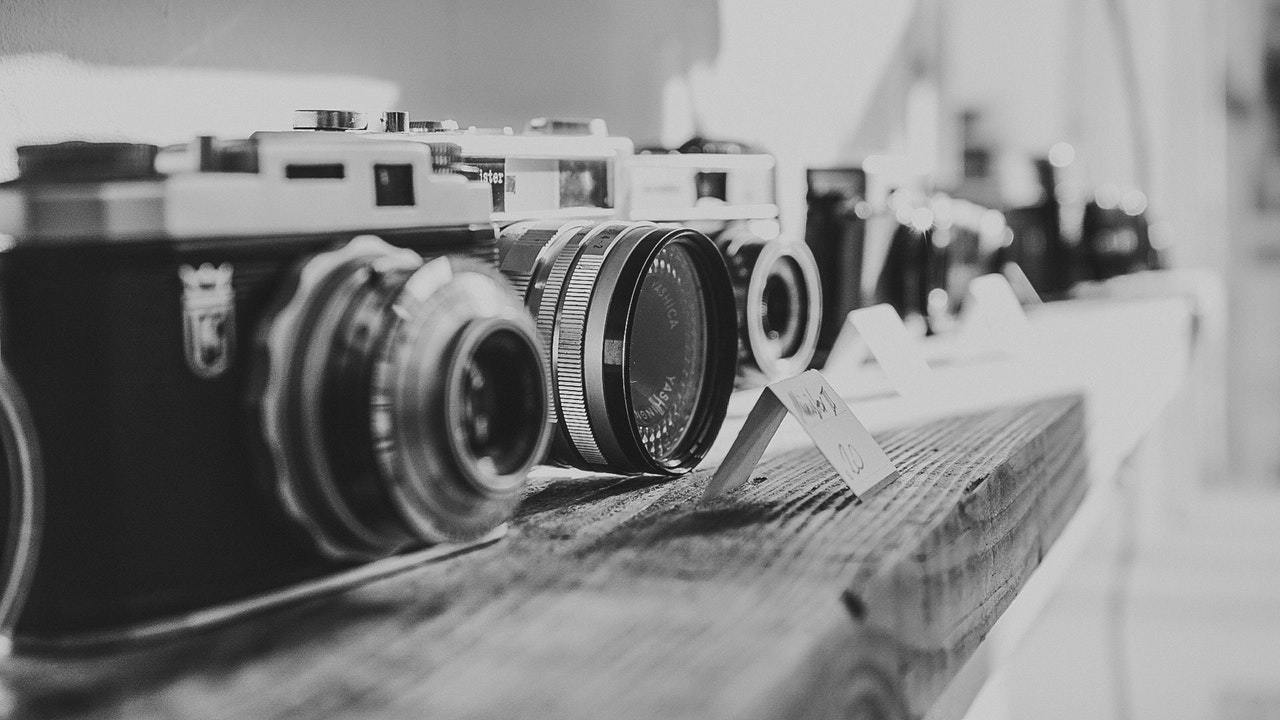DSLR vs point-and-shoot, that’s how it used to be. Professional photographers and aspiring professional photographers used DSLR cameras exclusively. For those who wanted better pictures but who were intimidated by the mystique of DSLR cameras, point-and-shoot cameras bridged the gap between cell phone cameras and DSLRs.
As the quality of point-and-shoot images has improved, though, professional photographers have come to appreciate lightweight point-and-shoot cameras with a versatile zoom lens as a means of capturing impromptu photographs of sights they see as they go about their day. At the same time, DSLRs with fully automatic modes and scene modes make these cameras more user-friendly. So, it’s not necessarily a case of one type of camera vs. the other any longer. Now it’s a question of which one best meets your photographic needs at the moment – a point-and-shoot or a DSLR.
What Is a DSLR Camera?

DSLR or digital single lens reflex cameras capture images on the photoreceptors of their image sensors rather than film. However, like SLR film cameras, DSLR cameras use mirrors to reflect the image from the lens to the viewfinder. This means that what you see in the viewfinder is exactly what the camera’s lens will capture. That’s the basic definition of a DSLR camera, but there’s more.
What More Is There to a DSLR Camera?
DSLR cameras are larger than point-and-shoot cameras, but their size provides more interior space for a larger image sensor. As we’ve already mentioned, a larger image sensor provides higher quality images.
Like point-and-shoot cameras, DSLR cameras have an automatic mode and several semi-automatic modes. Both allow you to make some changes to the camera’s settings in semi-automatic mode to adjust for the lighting, for example. DSLR cameras, however, provide more setting choices than point-and-shoots, so they offer more options for making adjustments than point-and-shoot cameras do.
DSLRs cameras also allow you to take full manual control of all of the camera’s settings. In fact, manufacturers design DSLR cameras for easy access to the manual controls because they expect that most users of these cameras eventually will use them in manual mode.
Both DSLR and point-and-shoot cameras may have built-in Wi-Fi, Bluetooth, and NFC connections. Apps from the manufacturer may allow you to control the camera from your tablet or smartphone. You might also be able to upload photos and videos directly to the internet
The ability to take more control of the camera’s settings as you feel ready to do so allows you to grow as a photographer without having to repeatedly replace your camera with a more sophisticated one.
One more advantage you should consider – unlike point-and-shoot cameras, DSLR cameras have a range of accessories available for specific photographic situations.
What Accessories Are Available for DSLR Cameras?

- When you purchase a DSLR camera, you purchase removable, interchangeable lenses separately from the camera body. Lenses that are available to be purchased separately are of higher quality than those that come with point-and-shoot cameras. By purchasing the lenses separately, you can choose the lenses you want for your type of photography.
- Adapters let you use lenses made by your camera’s manufacturer for other camera models in their line on your camera. Some of these lenses may not be fully compatible with your camera, however, and consequently, some of the lenses functions may not work. Check your user manual for lists of fully compatible and less compatible lenses.
- Lens filters enable you to take better pictures under difficult lighting situations. For example, UV filters and skylight filters improve image clarity by reducing the effects of haze, pollutants, and moisture in the atmosphere. They also reduce reflected UV light in bright beach and snow scenes. Filters also can create special effects. Orange filters add warmth to colors, enhance sunsets, and complement the skin tones of people with warm skin tones – natural redheads and strawberry blonds — while magenta filters complement people with cool skin tones – just about everyone else.
- DSLRs may have hot shoes for accessories like microphones and external lighting and flashes.
A camera with a hot shoe for an external microphone lets you choose the right microphone for the situation when you are shooting video. You might want a highly sensitive microphone to record an interview or to capture soft sounds. Microphones that reduce wind noise improve sound quality when you are shooting outside.
When you use the hot shoe to attach external lighting or flashes, you can use your camera to control these accessories. - DSLR cameras are more durable than point-and-shoot cameras. You also can buy weather-resistant and weatherproof cases for them. Waterproof cases allow you to shoot underwater while swimming, scuba diving, or diving. Always check the maximum depth allowed for the case, though, and keep your dive within that range.
What Are the Advantages and Disadvantages of DSLR Cameras?
What Are the Advantages of DSLR Cameras?
Larger image sensors contain larger photoreceptors that enable the image sensor to capture more of the color gradations and details from the image. So, larger image sensors result in higher quality, more detailed images. These more detailed images can be enlarged beyond poster size with no fear that they will become grainy or blurred.
DSLR cameras usually allow you to capture your image in RAW format as well as JPEG. RAW format captures and retains all of the details in the image. Your camera may slow down as it processes all of the information though, so JPEG is the better choice when you need to capture images quickly. RAW also creates larger files that require more storage space on your memory card. On the other hand, JPEG condenses the image when the picture is taken so that it can create a smaller file. It then condenses the image again every time the image is opened and resaved. This repeated condensation eliminates more and more detail from the image, but you can rectify this by saving JPEG images in PNG format before editing them.
DSLR and point-and-shoot cameras function identically in automatic and semi-automatic modes. The camera’s light meter and the scene and face recognition software determine the camera’s settings. However, a DSLR camera’s larger image sensor and a wider range of settings still give it the edge in image quality over a point-and-shoot camera.
Being able to take increasing control of the camera’s settings lets you experiment. You can learn how camera settings can convey emotions that give meaning to the image.
As already mentioned above, DSLR cameras are more durable than point-and-shoot cameras. As also mentioned, accessories outfit your camera for your type of photography.
Purchasing the lenses separately from the camera body allows you to choose high-quality lenses that are specifically designed for the types of photography that you enjoy. Point-and-shoot cameras come with lenses that are fixed to the camera, and the quality and capabilities of the lenses can vary. Generally, though, the lenses of point-and-shoot cameras are lower quality than lenses for DSLR cameras. In addition, some point-and-shoot cameras offer only wide angle or mid-range lenses which you can use for landscapes and individual or group portraits but which lack the range to focus tightly on distant subjects.

What Are the Disadvantages of DSLR Cameras?
DSLR cameras are larger and heavier than point-and-shoot cameras. You will also need to take your lenses with you, which adds to the number of things you must carry as well as to the weight and bulkiness of your camera gear. When switching between subjects or types of photography, you also may need to pause to change lenses.
Learning to use all of the features of a DSLR camera requires time, and the number of options available may feel overwhelming and confusing. Some people may find that this discourages them from trying to learn how to use these cameras.
DSLR cameras are more expensive than point-and-shoot cameras when you add the cost of the camera body and the lenses together.
What Is a Point-and-Shoot Camera?

Point-and-shoot cameras are small, lightweight cameras that you can carry with you in your pocket. They let you capture the photo-worthy sights that you see every day. As with DSLR cameras, however, there is more to know about point-and-shoot cameras.
What More Is There to Know About Point-and-Shoot Cameras?
Point-and-shoot cameras are a step up from the camera in your cell phone. They provide higher quality images than cell phone cameras. While easy to use, they also may have more features than the camera in your cell phone.
What Features Might Point-and-Shoot Cameras Have?
Point-and-shoot cameras have fixed lenses that are permanently attached to the camera. They can have an optical zoom lens that extends and retracts, but some point-and-shoot cameras have a wide angle or mid-range lens and depend on an extended digital zoom lens to capture distant subjects.
Optical zooms focus narrowly on distant subjects. Digital zooms repeatedly enlarge and crop distant subjects. Repeatedly enlarging a distant subject can result in an indistinct or grainy image, however.
Manufacturers design point-and-shoot cameras to operate in automatic mode and scene mode. Common scene modes include portrait mode with face detection, landscape mode, and modes for nighttime and low light photography. Scene modes might also include pet mode, fireworks mode, sunset mode, panorama mode, and modes for beach and snow scenes.
Some point-and-shoot cameras do offer full manual control of the camera.
Like DSLRs, these cameras may have built-in Wi-Fi, Bluetooth, and NFC connections. You might be able to control the camera from your tablet or smartphone and upload photos and videos directly to the internet
The bodies of these cameras consist of plastic to keep them lightweight. To reduce the size and weight of the camera, point-and-shoots may have a digital viewfinder that displays the image from the image sensor, thus eliminating the mirrors that reflect the image from the lens to the viewfinder. Point-and-shoots may even reduce their size even further by omitting a viewfinder altogether. If the viewfinder is omitted, the digital display serves as the viewfinder.
Accessories for these cameras include table and floor tripods. They do not have mounts for external microphones or lighting accessories. Choosing the range of the optical zoom lens is important with these cameras. An optical zoom with a range from 25mm to over 400mm should cover most types of photography.
What Are the Advantages and Disadvantages of Point-and-Shoot Cameras?
While the picture quality may not equal the images captured by a DSLR, versatility, lightweight, compact size, and user-friendliness make point-and-shoots perfect for day-to-day use.

What Are the Advantages of Point-and-Shoot Cameras?
Manufacturers design many point-and-shoot cameras to compete with the cameras contained in cell phones. Consequently, point-and-shoots are compact and lightweight, but they have more features and better lenses and image sensors than cell phone cameras.
When they are in full automatic mode, point-and-shoot cameras recognize commonly photographed scenes such as landscapes, portraits, indoor settings, and settings with low light. These cameras then select the scene mode that best matches the image. Each scene mode is programmed with the most commonly used settings for that scene. In portrait mode, the camera recognizes the best settings for the background behind the subject while its face recognition software chooses the best settings for the skin tone of the person or persons being photographed. All you need to do is compose your shot and press the shutter button.
Point-and-shoot cameras offer easy access to controls for shooting photos and videos in automatic mode. Point-and-shoots also provides quick access to a selection of semi-automatic scene modes.
With a versatile optical zoom lens, point-and-shoots readily handle most types of photography and photographic situations. The features of these cameras make missing a picture-worthy moment far less likely.
What Are the Disadvantages of Point-and-Shoot Cameras?
The image sensors in point-and-shoot cameras are smaller than those in DSLR cameras. Consequently, these image sensors have smaller photoreceptors than full-size image sensors. A smaller image sensor means that the camera captures less information from the image. Some of the detail and gradation between colors is lost. That missing information limits the size of the copies that you can make from the image. Enlarging these images too far results in blurred or grainy images.
Most point and shoot cameras capture images in JPEG format because manufacturers expect that most users often will use the camera to capture images of moving objects like kids and pets. They also expect that users will use the camera on vacation or at family events where they will want to take lots of images. As already mentioned, JPEG captures images quickly and creates smaller files so that you have room for more pictures on your memory card, but also as already mentioned, it does condense images and lose detail. Just remember to save your images as PNG files before editing them.
Point-and-shoot cameras may allow only limited manual access to the camera settings. Some offer only automatic and semi-automatic modes.
While some point-and-shoot cameras do allow you to take manual control of the settings, access to these options can be buried deep in menus. Manufacturers expect most people who buy point-and-shoots to use the automatic and scene modes.
Best Point-and-Shoot Recommendations
Canon PowerShot G7 X Mark II
![Canon PowerShot Digital Camera [G7 X Mark II] with Wi-Fi & NFC, LCD Screen, and 1-inch Sensor - Black, 100-1066C001](https://m.media-amazon.com/images/I/51noZbmp16L.jpg)
The PowerShot G7 uses a 1-inch image sensor, which is larger than the 1/2.3 inch (2/3 of an inch) image sensor found in many point and shoots. The wide-angle optical zoom lens ranges from 24mm to 100mm with an additional 4X of digital zoom. This is a good range for shooting selfies, group selfies, portraits, group portraits, landscapes, and architecture, but it lacks the ability to focus in tightly on distant subjects. Unlike most point-and-shoots, though, you can choose to shoot in RAW format or JPEG. It captures still images at a resolution of 20.1 MP and full HD movies at a resolution of 1080p with stereo sound. Most point-and-shoots film with monaural sound. For better photos of your friends and family, you can register the faces of up to 12 different people with up to four different angles or facial expressions. The face recognition uses this information to recognize these people and optimize the camera’s settings. You can, of course, always shoot in full auto-mode or a wide selection of scene modes, but this camera also offers various levels of manual control. The PowerShot G7 eliminates a viewfinder to reduce size, so the tilt screen display functions as the viewfinder. The screen does flip up above the top of the camera allowing you to see yourself when shooting selfies. This type of flip screen is also useful for vloggers who film themselves as they do how-to demonstrations or product reviews. The camera includes built-in WiFi and NFC capabilities so that you can upload pictures and movies directly to the internet, control your camera with your smartphone or tablet, and share pictures and movies instantly with other NFC devices.
Sony RX100 IV

Like the PowerShot G7, the Sony RX100 IV has a one-inch image sensor. It captures still images at a resolution of 20.1 MP and movies in full HD at a resolution of 1080p in stereo sound. The wide angle ZEISS Vario-Sonnar T optical zoom lens ranges from 24mm to 70mm which is good for selfies, portraits, group portraits, landscapes, and architecture. Again like the PowerShot G7, you can capture your images in either JPEG or RAW, and you can captures movies in full HD at a resolution of 1080p with stereo sound. You can register the faces of up to eight people. Unlike the PowerShot G7, the Sony RX100
Panasonic Lumix DMC-LX10

The Lumix DMC-LX10 also uses a one-inch image sensor. It captures still photos at a resolution of 20.1 MP and full HD movies in 4K with stereo sound. While 1080p remains the standard resolution for posting videos on the internet, some vloggers are switching to 4K. You may or may not be able to see the difference between the two resolutions on the internet, but if you want to play your movies on a 4K TV, you will probably want a camera that can shoot videos in 4K. This camera’s wide angle Leica DC Vario-Summilux optical zoom lens ranges from 24mm to 72mm. Again, that’s a good range for selfies, portraits, group portraits, landscapes, and architecture, but it doesn’t have the range to focus in tightly on distant objects. The LCD display functions as a touch screen and flips up so that you see yourself as you are shooting a selfie or filming yourself as you are doing a demonstration for your vlog. For improved portraits, you can register the faces of up to three people on this camera. You can shoot in
Best DSLR Recommendations
Nikon D3500

The Nikon D3500 uses an APS-C image sensor which measures 33.5 mm x 15.6 mm. For comparison, the 1-inch image sensors in the point-and-shoot cameras above measures by 12.6 x 9.8 mm and a full-size image processor measures 36 x 24 mm. While the still image resolution of the Nikon D3500 at 24.2 MP may not seem
Canon EOS 80D
No products found.The Canon EOS 80D uses an APS-C image sensor that measures 22.5 x 15 mm that, like the image sensor for the Nikon D3500, allows room for larger photoreceptors. The EOS 80D captures still images at a resolution of 24.2 MP and full HD movies at a resolution of 1080p. This camera comes bundled with two Canon lenses, a wide angle zoom lens that ranges from 18mm to 55mm and a telephoto zoom lens that ranges from 55mm to 250mm. These two lenses should be fine for most photographic situations. However, if you become serious about wildlife or action photography, you might want to add a telephoto lens with a more extended range. As with the other recommended cameras, you have the choice of shooting in JPEG or RAW format, and you can shoot in full automatic mode, scene mode, or take varying degrees of control of the camera settings. As with the Nikon D3500, this camera has built-in WiFi but lacks NFC capabilities. The accessory shoe allows you to use this camera with an external Canon microphone, a range of external Canon flash units, and assorted lens filters.
Conclusion
In the end, the best camera for you comes down to what you are most comfortable with and what you want to do with your movies and photographs. As with the cameras we recommend here, you can find cameras with wide angle lenses that are great for landscapes and architectural shots of iconic buildings when you’re traveling as well as selfies, group selfies, and portraits of friends, family, and pets when you are at home. You also can find cameras with telephoto lenses that add the option of focusing in tightly on fast action shots or distant subjects such as a hot air balloon or a bird on the wing. All of these cameras allow you to shoot in full automatic mode, so you can begin taking photographs and shooting movies right away. Then, if you want, you can learn more about photography and your camera’s controls and settings as you are ready.



